Paul Forte is a fascinating artist and thinker. “Visual Thinking and Cognitive Exploration” is a major essay on the theory and practice of Conceptual art, also a short history of the tradition, also a lesson on how to appreciate art, and also a Cook’s tour of Forte’s own amazing art (dwell on the images, meditate upon them). Steeped in the history of art and philosophy, Forte sorts out definitions and vectors of influence, does not lean on jargon but explains it, and is above all infectiously passionate about his subject. Note also that the essay is dedicated to the late Arthur C. Danto, a hugely influential philosopher (whom I have myself read assiduously now and then over the years), Forte’s friend and mentor.
dg
—
For Arthur C. Danto 1924 – 2013
The international Conceptual art movement that swept the art world in the late 1960’s emphasized the primacy of the artist’s thoughts or ideas in the art making process and forever changed how many artists think about and make art. Reaching its peak in the late 1970’s, the movement was eventually overshadowed by the resurgence of more traditional art forms, but not before sowing the radical seeds of a new consciousness, at least where art is concerned. Almost a decade after Conceptual art passed from the scene something interesting happened: in the mid 1980’s the movement seemed to resurface in what was touted as a revival called “Neo-Conceptualism” (also referred to as “Neo-Geo”). While roundly dismissed by Conceptual purists at the time as lacking in critical value, Neo-Conceptualism nevertheless signaled a significant turn for contemporary art.
In hindsight it appears that Conceptual art began evolving in the late 1970’s, and Neo-Conceptualism was one outcome of this evolutionary process. The curious thing about this supposed revival was its acquiescence to the importance, indeed necessity of perception for expressing or communicating ideas along with the return to more conventional materials and methods of art making. While an implicit acceptance of the centrality of material form in art didn’t necessarily negate or displace the predominance of the idea, it did give material form equal weight or footing, rendering the most controversial theory of the 1960’s, “de-materialization,” highly problematic. Even so, much of the work that resulted from this supposedly renewed Conceptualism seemed sensationalist and facile. In this sense the purists were right, and yet the reintroduction of perceptual concerns while adhering to the basic principle of Conceptual art concerning the primacy of ideas was highly significant. Thus the stage was set to usher in a post-Conceptual era: art, or at least, Conceptual art, seemed to be evolving in a cognitive direction. “Visual Thinking and Cognitive Exploration” attempts to make sense of this far reaching development and hopefully contribute something to our understanding of aesthetic experience.
•
Desert Parcel (book fragments)
Paul Forte, 2013
Collage on canvass made from the fragments of an illustrated volume titled: Picturesque Palestine, Egypt and the Sinai, published in the late 19th century
39 3/4 x 54 3/4 inches
SPACE
“Artists today are an especially serious group of what one ought properly to think of as visual thinkers.”{{1}}[[1]]Arthur C. Danto, “Art of the Free and Brave.” The Nation, May 8, 2000, p. 45.[[1]] — Arthur Danto
Arthur Danto’s observation about artists, expressed in a review of the Whitney Biennial over a decade ago, seems prescient given the ubiquity of art made along ostensibly conceptual lines today. Writing for savvy readers of The Nation in 2000, Danto was concerned about what he saw as an erosion of aesthetics for the sake of imparting moral meanings. He was not objecting to art that raised social awareness, only work that might do so at the expense of aesthetic value, as he understood it. There are many competing concepts of aesthetic value, making the subject contentious to say the least. And yet, the notion of visual thinking seems generic enough to have some bearing on a host of ways in which art might be valued. I believe that Danto felt that by focusing on contemporary art as a form of visual thought we might renew the discussion of aesthetic value and perhaps rediscover just what it was about the experience of art that we find so engaging. Danto’s basic point about artists as visual thinkers remains sound and was never at odds with the possibility of art being used as a vehicle for moral posturing. His concern over the advancement of moral agendas through art at the expense of aesthetics carries little weight today, because most artists, critics, curators, and others understand that there was never an issue between aesthetics and socially committed art, although a fundamental change in attitudes about the use of aesthetics has taken place, something that Danto may not have anticipated: the aesthetic practices of many contemporary artists have become, for lack of a better term, conceptualized. In other words, aesthetic properties such as line, form, and color, for example, are often not explored for their own sake as it were but are used as indices or signifiers, elements of visual thought perhaps best understood in terms of the artist’s intentions. This outcome is one legacy of Conceptual art, that radical re-visioning of art begun by Duchamp and championed by Danto. There is no little irony in the fact that the undermining of aesthetic attitudes that troubled Danto should come as a result of this legacy.
Headstone (Laying NO to Rest)
Paul Forte 2005
Black Slate, 42 x 22 x 2 ½ inches
Collection Yale University Art Gallery
SPACE
Arthur Danto’s view of artists as visual thinkers prods us to re-examine our aesthetic experiences in light of what they can tell us about cognition. Danto’s perspective, shared by a number of his contemporaries, is important because in supposing that many contemporary artists are basically engaged in visual thinking, he suggests a fundamental reevaluation of art. This reevaluation can be summed up in terms of the potential that art has for deepening our understanding of cognition or cognitive processes. Certainly such understanding is as important as the moral or intellectual purpose of one’s artwork, if, indeed, that is the intention of the work. In fact, it could be argued that it takes precedence over any moral or intellectual purpose, however lofty or urgent, because art that explores how we know and understand, however implicitly, can at the very least reveal new and engaging ways of communicating ideas. Palpable realizations about knowing and understanding are not simply byproducts of one’s social or political messages, rather, they are the very things that make these messages effective, enduring, or even possible in the first place. If we consider the potential of art in light of this basic value, surely its “moral or intellectual purpose,” whatever it is, will be preserved by virtue of the deeper ways the work has changed our hearts and minds.
Ringing Silence
Paul Forte 2012
Alarm bell, map and biology text in found box
13 ½ x 16 ¾ x 12 ½ inches
SPACE
The idea of artists as visual thinkers gained currency in the 1960’s and 70’s through the advocacy of visual thinking by the psychologist, Rudolph Arnheim. But visual thinking, according to Arnheim, is hardly limited to the activities of artists. It is a capacity that we all share, artists and lay people alike, and may be the only form of thought capable of engendering productive understanding on a broad scale. “Visual thinking is the ability of the mind to unite observing and reasoning in every field of learning. Whether people spend their days on using the physical forces of their bodies as garage mechanics or surgeons or dancers or whether they labor quietly at their desks as mathematicians or poets, the principal instrument on which their minds rely will always be the same.”{{2}}[[2]]Rudolph Arnheim, The Split and The Structure. Berkeley, CA: University of California Press, 1996, p. 119.[[2]] That instrument, of course, is the eye. The practice of one’s discipline forms the connection between observing and reasoning, something that results in the give and take or back and forth of one’s art or activity. One does, observes and evaluates the results, and then proceeds to adjust the doing as is necessary. The work of either artist or garage mechanic involves a dynamic interaction between doing or making and observing.
Façade (Compendium Wall)
Paul Forte 2013
Encyclopedia covers (1893) on wood
42 x 52 ½ x 1¼ inches
SPACE
But art making, certainly for the creative artist, requires open observation and careful reasoning. The mind is always implicated in what and how we see, so the challenge for the creative artist involves sustaining an imaginative approach to both observing and reasoning without succumbing to solipsism or sophistry. An imaginative mind combined with a critical eye seems to be the key.
Compact Record of Discarded Thoughts
Paul Forte 2005
Wadded paper (artist’s writings), glue, varnish
12 x 12 x 12 inches
SPACE
Our knowledge of self and world is in constant flux; there is an ongoing interrelation or interaction between what we know and what and how we see. Visual thinking in this regard seems more fundamental than abstract thought; thought seemingly divorced from qualitative features of perceptual states that determine what something is like, or to employ a philosophical term: its qualia. The artwork of artists exploring the interrelations between the phenomenal properties of their materials and ideas is often provocative and unusual, calling for a more demanding set of interpretive skills; skills beyond at least aesthetic judgment that puts great store in absolute distinctions between perceptual and conceptual concerns. When this dichotomy is guiding appraisal of the artwork it is often misunderstood and subsequently misjudged. For example, critics, curators, and the art viewing public often overlook or underestimate the cognitive value of contemporary art seemingly indebted to some tradition or another, assuming that such work is primarily concerned with furthering that tradition and little else. If, on the other hand, such art is presumed to simulate a tradition and have a conceptual intention, then it is usually viewed as a matter of either pastiche or parody. The presumption in the first case is that the work is primarily the result of formal concerns, to some extent or another, in the second, that the work is either a matter of critique or gamesmanship, and essentially conceptual. It appears that much like the apparent opposition between aesthetics and socially engaged art, absolute distinctions between the formal and the conceptual, eye and mind, are overstated if not illusory.
Book of Maladies
Paul Forte 2013
Sealed book, crystals and mixed media on painted base
16 x 22 x 3 inches
SPACE
While visual thinking is commonplace, it is nonetheless a mainstay of creativity. For artist and audience alike, artwork that engages visual perception and thought on an equal footing can imbue aesthetic experience with clarity, depth, and passion. Artwork that delivers in this way may even lead to a new attitude toward aesthetics in general. In my view, such engaging artwork precedes or makes the new attitude possible. Thus Danto points the way when says that contemporary artists “portray themselves as engaged in conceptual exploration, calling boundaries into question, seeking to bring to consciousness the way we think about many things.”{{3}}[[3]]Arthur C. Danto, op. cit., p. 47.[[3]] This is all well and good, and yet, it seems that artwork that both results from visual thinking and requires it in order to be properly understood or appreciated will implicitly call into question the limits and efficacy of conceptual exploration. This is a reasonable assumption supported by a diverse yet coherent body of contemporary art practices, regardless of how those practices might be characterized (i.e., as “conceptual or conceptually oriented”). It is my contention that the primary factor underlying these practices is not conceptual exploration, but rather, cognitive exploration.
Small World
Paul Forte 2008
Magnetized globe with metal objects on wood stand
20 x 12 ½ x 12 ½ inches
SPACE
Many artists, critics, and curators continue to use the terms “conceptual” and “cognitive” interchangeably. One reason for this indiscriminant usage may be related to the orthodox understanding of cognition as a domain consisting of “logical reasoning, awareness, and judgment, and the rational structuring of sensation and perception.”{{4}}[[4]]Herbert Kohl, From Archetype to Zeitgeist. Little, Brown and Company, Boston Toronto London, 1992, p. 179.[[4]] This understanding relies on or is in keeping with presumptions concerning mental processing and the formation of ideas. But cognition is essentially a matter of knowing and understanding, which certainly involves thought and ideas, but thought and ideas, in daily experience as well as in the art making process, are never fully independent of sensory input or emotive aspects, at least indirectly. A fuller understanding of cognitive processes entails apperception and the emergence of new consciousness. Consciousness of the integration of thought, sensation and feeling merits mentioning because it has bearing on understanding the basic distinction between the cognitive and the conceptual. Consider for a moment the fact that a good many of our ideas and concepts are first expressed metaphorically, expressions that were originally based on some manner of sensory experience. Consider also the deep relationship between thought and emotions. Feeling may be ultimately inseparable from thought, however subtle the thoughts or manifest the feelings. Think about the feelings that often accompany ideas that give rise to strong religious or political convictions. The person holding such convictions may not be aware of his or her feelings, but others often are. There is even a question as to whether the “rational structuring of sensation and perception” is possible in any definitive sense because it seems that sensation and perception are never entirely free of unconscious factors. Briefly put, knowing and understanding are intertwined processes that involve more than just thought and ideas.
Artist’s Breath
Paul Forte 2008
Sealed bottle on brass stand
13 x 4 ½ inches
SPACE
The late philosopher, Nelson Goodman, made a lasting contribution to our understanding by clarifying the distinction between the cognitive and the conceptual, as well as prodding us to reconsider the nature of aesthetic experience. “In contending that aesthetic experience is cognitive, I am emphatically not identifying it with the conceptual, the discursive, the linguistic. Under ‘cognitive’ I include all aspects of knowing and understanding, from perceptual discrimination through pattern recognition and emotive insight to logical inference.”{{5}}[[5]]Nelson Goodman, Of Mind and Other Matters. Cambridge, MA: Harvard University Press, 1984, p. 84.[[5]] Thus it seems clear that the cognitive encompasses the conceptual, not the other way around. That memory, knowledge, and imagination, as mental capacities, to some extent all determine what and how we see is beyond dispute. But the point is to see anew. Cognitively effective art can have an impact on our lives because it enables us to, in Goodman’s words, “See what we did not see before, and see in a new way.”{{6}}[[6]]Nelson Goodman, ibid., p. 85.[[6]] I think that Goodman’s main point here is that such art can be instrumental in developing visual acuity, thus enriching our daily experience. I believe that some of this artwork can do even more. Cognitive discoveries, finding new ways of seeing things, are, ultimately, discoveries about cognition itself. The new experiences that art can provide lay the groundwork for how we come to understand ourselves and the world and how we eventually conceptualize that understanding.
Nest Egg
Paul Forte 2010
Bird’s nest, glass globe, photo and map in found box
10 ½ x 13 x 7 inches
SPACE
•
“In metaphor, symbols moonlight.” {{7}}[[7]]Nelson Goodman, Ibid., p. 77.[[7]]—Nelson Goodman
There is a mode of reference that has bearing on the notion of visual thinking. This is metaphor; something that occurs primarily in verbal form, but is not limited to the realm of letters.{{8}}[[8]]Whether or not verbal metaphor is related to visual thinking is an open question, one involving an understanding of how mental images are the bases of associations underlying most verbal metaphors. If most verbal metaphors are the result of making associations based upon mental imagery, does that make such metaphors inherently a matter of visual thinking? It seems self-evident that visual metaphor is a matter or form of visual thinking.[[8]] I accept the supposition that metaphor is an essential component of language, in both its literary and everyday usage. Metaphor animates language in complex and subtle ways. It makes words breath, adds color and interest, and generally makes reading pleasurable. But it is more than an ornamental or humanizing gesture. In instances where, for example, denotative language falls short or is nonexistent as a means of describing a particular phenomenon, metaphor serves an invaluable function. Thus, in science, for example, metaphor has an indispensable role in the advancement of knowledge. Catherine Elgin comments on the value of metaphor in this regard. She maintains that while it is true that scientists, unlike artists, “strive for literal, univocal, determinant symbols,”{{9}}[[9]]Catherine Elgin, “Reorienting Aesthetics, Reconceiving Cognition.” The Journal of Aesthetics and Art Criticism, Vol. 58, No. 3 2000, p. 223.[[9]] it is wrong to assume that metaphor and other indirect forms of reference are alien to science. Elgin states her case eloquently: “Inasmuch as metaphor is a device for drawing new lines and for redeploying conceptual resources that have proven effective elsewhere, it is an immensely valuable tool at the cutting edge of inquiry. Where there is no literal vocabulary that marks the divisions that scientists want to recognize, they resort to speaking metaphorically of strings or black holes or central processing units. But as inquiry progresses, the talk becomes increasingly less metaphorical.”{{10}}[[10]]Catherine Elgin, Ibid., p. 223.[[10]] I think that visual metaphor has an equivalent value for the visual arts. The practice of appropriating images and or objects from everyday life for metaphorical ends could be considered analogous to a redeployment of conceptual resources as it occurs in the theoretical language of science. Just as it is wrong to assume that metaphor plays no essential role in the advancement of knowledge through science, it is equally wrong to assume that visual metaphor in art is not essential to our understanding of aesthetic experience. Indeed, it may be essential to our even having an aesthetic experience. If aesthetic experience is cognitive, as Nelson Goodman contends, then visual metaphor in art is also a very valuable tool at the cutting edge of inquiry. That metaphor in general connects disciplines or domains, at least in principle, indicates more than versatility. Given its reach, it may be an instrument that combines thought, imagination, sensation, and feeling in ways that lead to new knowledge.
History Lesson
Paul Forte 2009
Collage and mixed media on board
32 x 40 inches
SPACE
Beckett’s Notes
Book covers, postcard, map and compass on board in artist’s frame
26 ½ x 30 ½ x 1½ inches
SPACE
Of course not everyone agrees that art is a form of inquiry. Those who balk at the idea that art can teach us something fall into two general categories: those who cannot take it seriously, and those who resist its seriousness. Art is as serious as science, and just as the results of scientific inquiry need not threaten our well being, understanding and accepting the seriousness of art need not undermine the spirit of art. Some people maintain that they love art and that it is possible to enjoy it for no other reason than the pleasure that it affords. Some people take it seriously for the moral instruction or social message that it conveys. Whether we treasure art as a way of refining our sensibilities or as a tool for consciousness raising, in either case we gain immeasurably when we can better understand why we consider a particular work of art pleasurable, important, or both. The point is that understanding the artwork from a cognitive perspective can both deepen our pleasure in the work and or our respect for its moral or social message. Moreover, artwork with the primary purpose of exploring cognition through visual metaphor can be both pleasurable and socially relevant. Just as the metaphorical language of science can broaden our understanding of the world, the metaphorical images and objects of art can deepen our understanding of ourselves. As understanding grows, the metaphorical language used to express the theoretical advances of science gives way to more literal or denotative forms of expression. Something similar may be happening as the investigation of cognition through art progresses, although it is the nature of the visual metaphor that is changing, not the underlying metaphorical orientation through which the exploration advances.
— Paul Forte
Author’s note: Arthur Danto was a wonderful philosopher and critic as well as accomplished print maker. I am very fortunate to have known Arthur, a mentor of sorts, and someone who genuinely cared about art and never shrank from offering his support and encouragement to those artists that he deemed worthy of attention. He gave a talk at the Yale University Art Gallery on my “Headstone” in 2005. It was a great evening and Arthur was in fine form. He will be greatly missed.
——————————-
Paul Forte’s career as an artist began in the San Francisco Bay Area in the early 1970’s. The Bay Area in those days was a crucible for social, political and cultural change, and Forte managed to play a small but vital part. Like many artists at the time, he was interested in the experimental possibilities of art and, like many others, believed that the changing nature of art still had the capacity to enable new visions, new voices. Art and politics were always an uneasy combination for the artist, although he understood perfectly well that how art is received, or enabled is largely contingent upon politics and economics, perhaps especially in a capitalist society, which tends to marginalize those artists who cannot or will not meet the demands of the market. This realization led to an interest in Conceptual art, and to one of its principle mediums: the “artist’s book,” of which he self-published a number of works in small editions. Throughout the 1970’s Forte’s work explored the subjective and aesthetic dimensions of conceptual approaches to art making through a variety of media that would later become the basis for what the artist calls a cognitive approach to art making.
A resident of Rhode Island since 1987, Paul Forte has exhibited at the San Francisco Art Institute, San Francisco, California (1975,1983); A Space Gallery, Toronto, Canada (1978); 80 Langton Street Gallery, San Francisco, California (1981); The Center for the Visual Arts, Oakland, California (1986); The Wadsworth Athenaeum, Hartford, Connecticut (1991); the Kim Foster Gallery, New York City (1998); and Francis Naumann Fine Art, New York City (2007 & 2008). Forte’s work is included in the Sol Lewitt Collection, Chester, Connecticut; the Museum of Modern Art, New York City (artist’s books); and the Yale University Art Gallery, New Haven, Connecticut, among others. Forte has lectured on his work at Hera Gallery in Wakefield, Rhode Island; The University of Rhode Island; The Rhode Island School of Design; Brown University (Honors Program); Pratt Institute in Brooklyn, New York; The California College of the Arts in Oakland, California; and the University of California at Berkeley. Paul Forte is a past recipient of a National Endowment for the Arts, Artist Fellowship (1978), and a Pollack-Krasner Foundation Fellowship (1990).
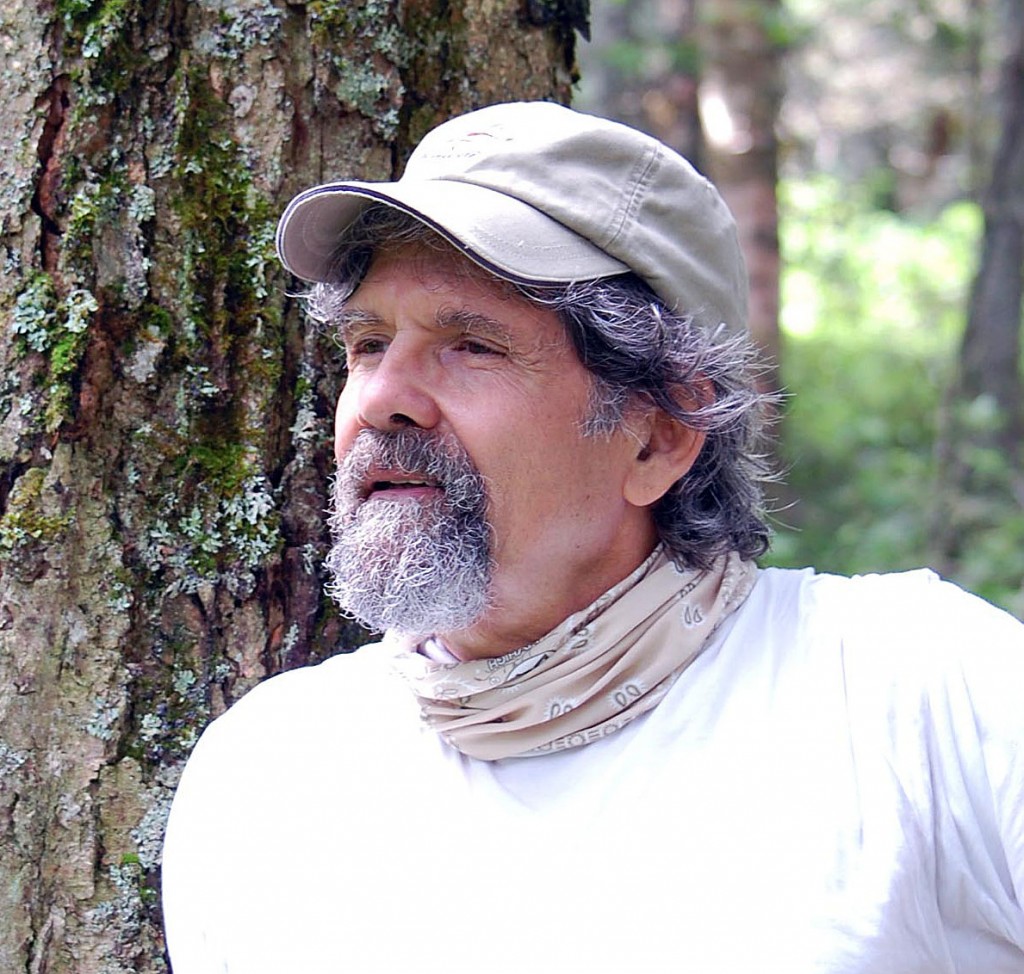
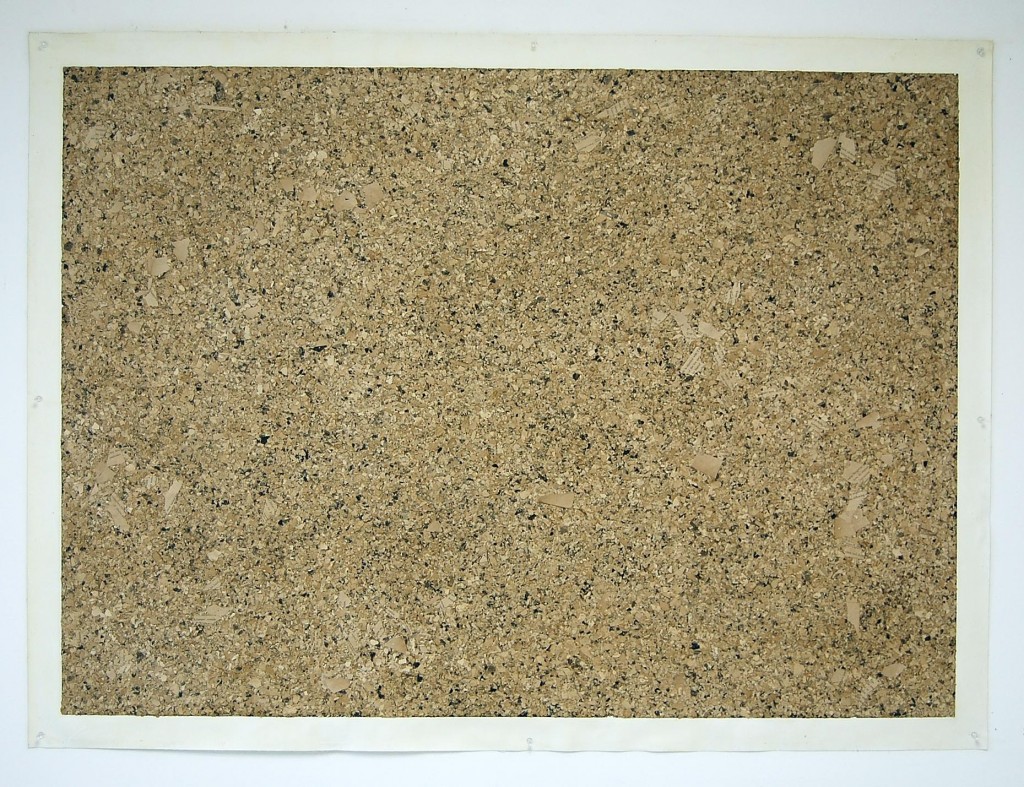
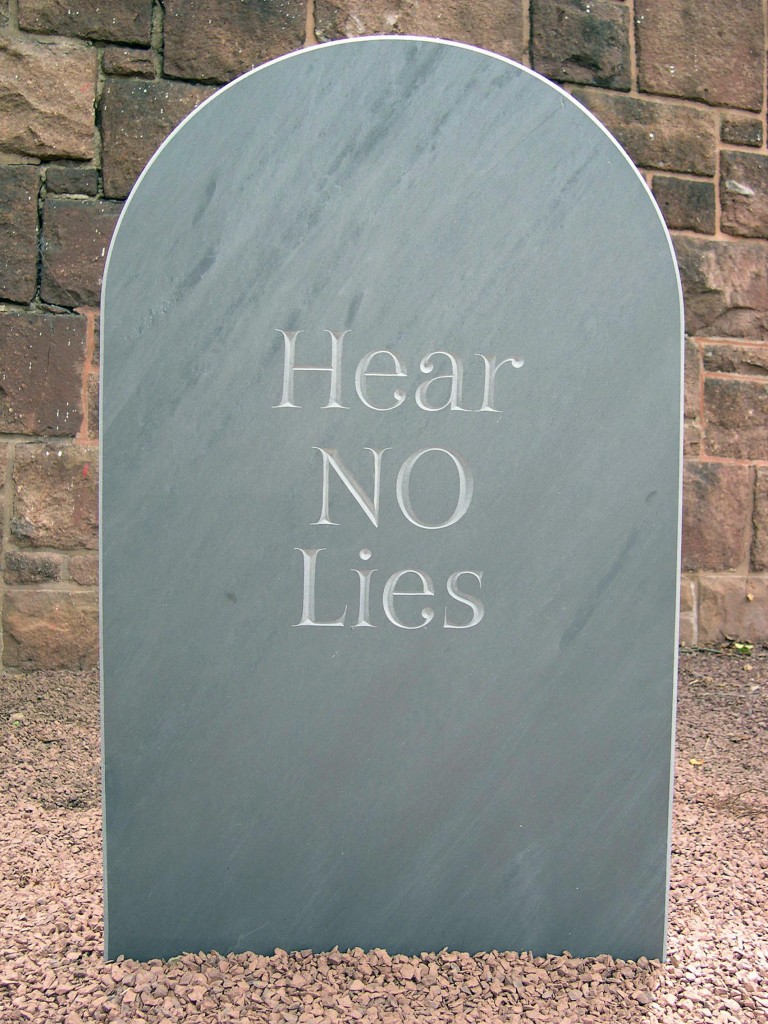

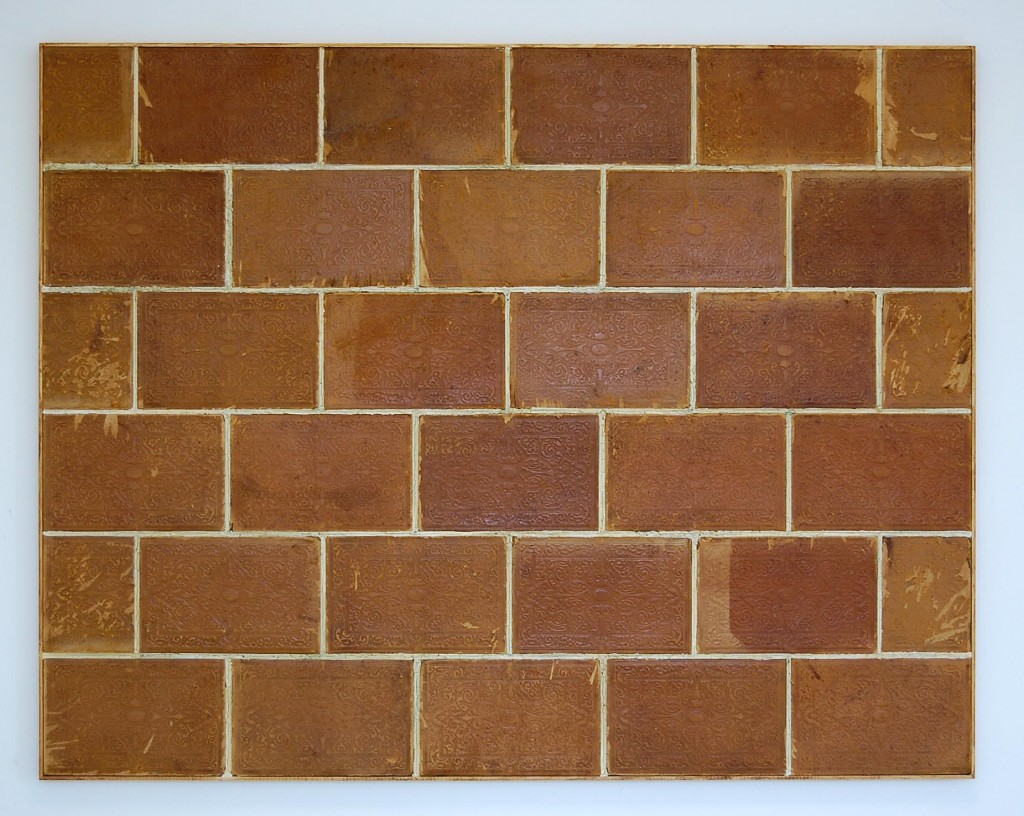
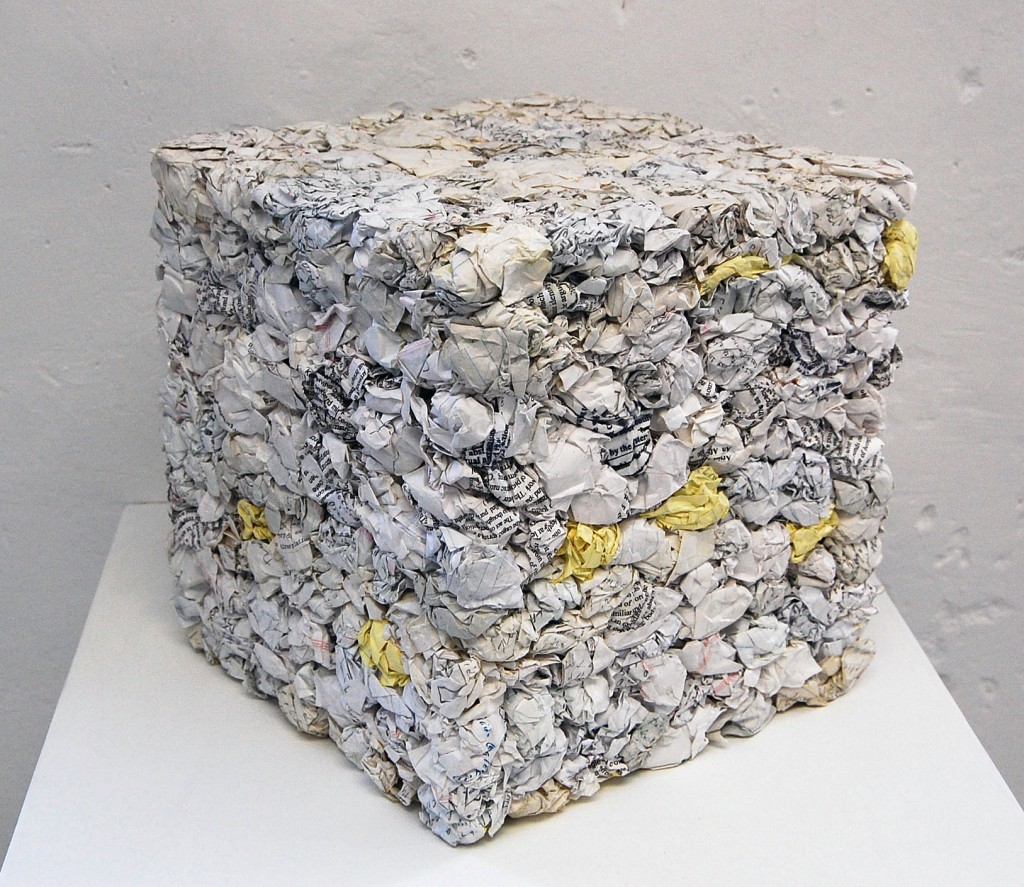

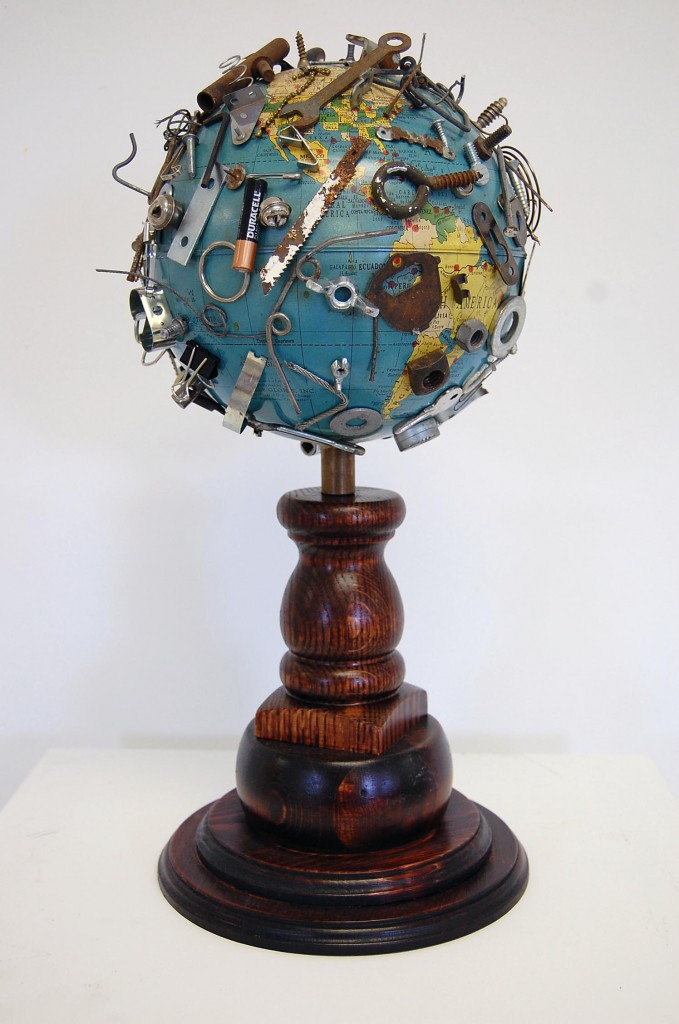

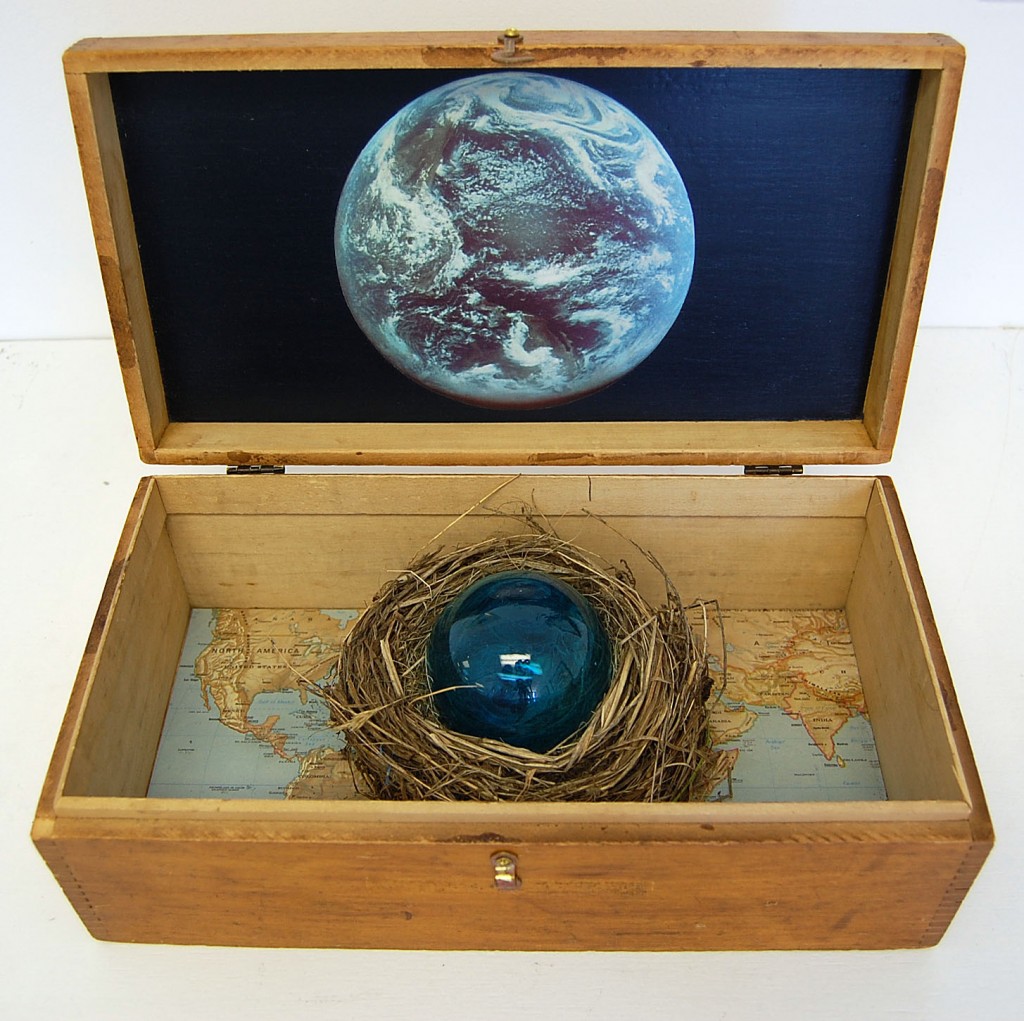
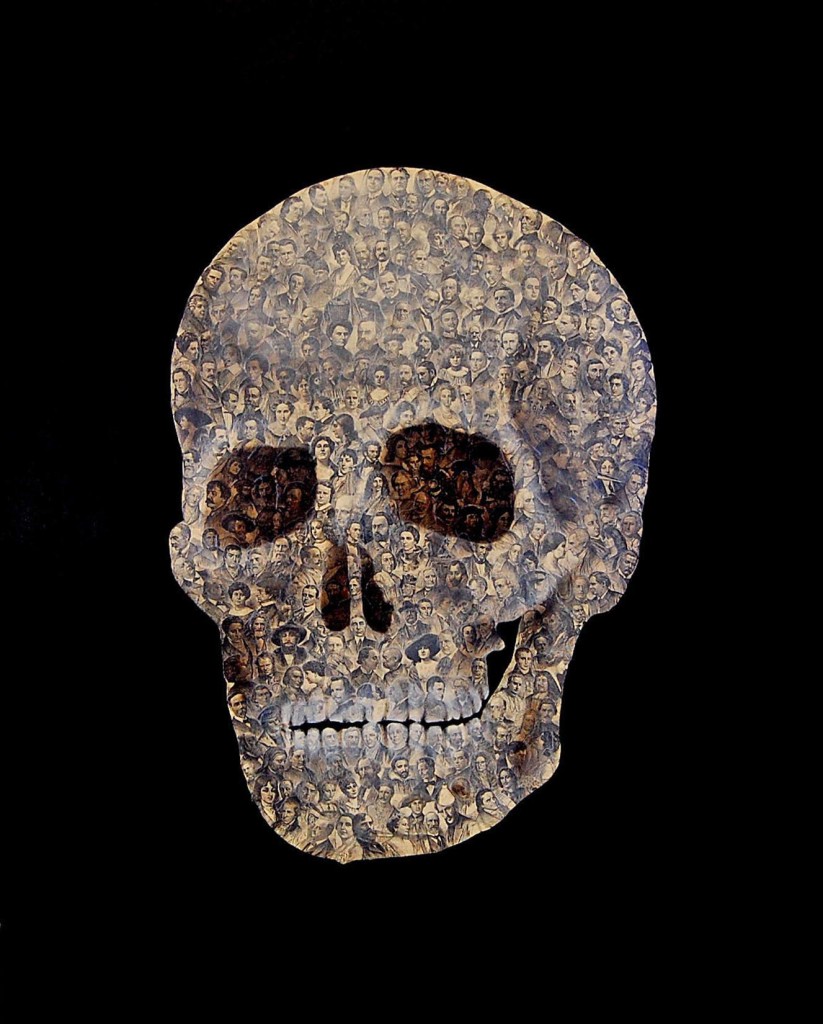
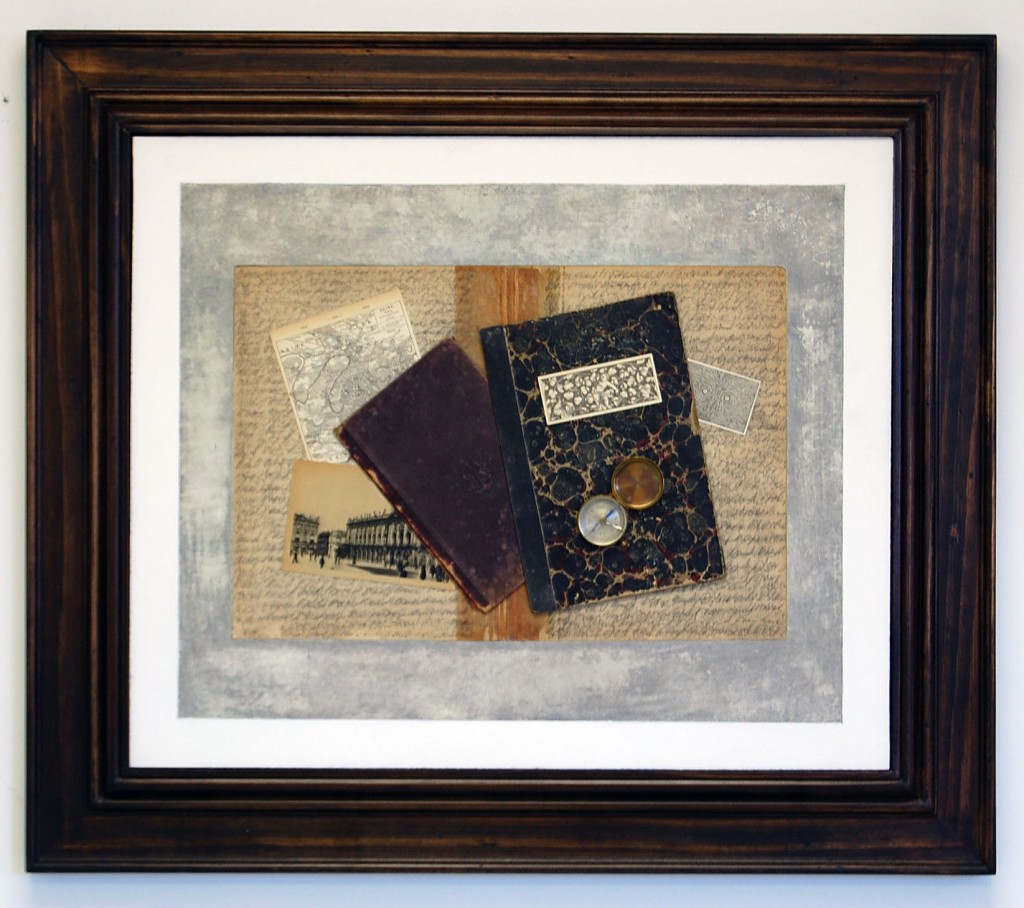
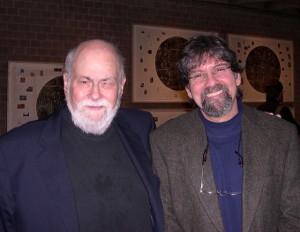
Love “History Lesson,” Paul.
Thanks Doug. “History Lesson” is a memento mori made from scores of tiny portraits of the dead culled from an old set of encyclopedias published in the 1920’s. I’ve taken a number of liberties with the portraits, for example, adding a hearing horn to Beethoven’s ear; attaching a beard to the face of Lord Byron (making him resemble a young Karl Marx); showing Michelangelo tossing a small sphere in the air, and so forth. Death is such a weighty business …perhaps even levity cannot temper its sting. If nothing else, these humorous juxtapositions are meant to suggest that even the best of us (and most certainly the worst of us) are not immune to folly.
Paul
The memento mori idea I got, yes. But these details are wonderful. Thanks.
Hey, Paul–I only got about 1/2 way through the text, but really enjoyed the images of your work!
Linda:
I’m sorry to hear that you only made it half way through the text. Maybe you will return to it later. Texts about art, provided that they are well written, are not unlike artworks that one is unfamiliar with. We walk away from the work …only to be struck by it later.
Paul
Hi Paul,
I was amused to see your artist’s photo which reminded me of mine. ..two guys with grey hair and baseball caps in the woods.
I really liked Compact Record of Discarded Thoughts. I hope it’s alright if I like it for conventional aesthetic reasons. It does make me think though that I should send more of my recorded thoughts to a place like that…or maybe the recycling bin so I can forget I ever wrote them. Old joke: better to keep your mouth shut and have everyone think you’re stupid than open it and remove all doubt.
It may be a strange thing for a painter to say but I’m not so sure of the dominance of the visual when it comes to being aware of being aware. Somehow I don’t think a blind person is particularly disabled in that respect. I think touch is huge. I think we’re like sponges, covered with ways in. Bombarded by clues.
In the film that Doug posted on NC about Duchamp you hear “There is no solution because there is no problem.” I didn’t watch it to the end. I’m not sure if that’s something that Duchamp said himself. For me it’s all problems. Finding solutions to the problem of being a good painter is continuous. How to be a contributor to an on-line arts magazine? (Doug’s been very patient with my struggles to find a good solution to that one.) Some problems we’re suited to solving and others, not so much.You strike me as a person like myself who is trying to find reasonable solutions to complex problems.
My artist friend says only the doing counts and I think it’s true, because what we do has such a profound effect. Thanks for doing the essay and the art and the responses to mine.
Stephen May
Stephen:
It was gratifying to know that you enjoyed the image of “Compact Record …” I have no problem with whatever reason you like this work, and besides, even if I did there is little that I can do about it. I can offer some interpretations about individual pieces that may have an advantage given that I’m the artist who made the work but all interpretations are subject to modification or overturning. I assume that one reason you like the piece is that it represents the negation of writing. It could, but there is much more to this formally simple work than that. I will offer a little background on “Compact Record …” but first I want to address something that you wrote in your response.
In infancy and early childhood the sense of touch functions in tandem with visual perception and is essential to cognitive development. And we never really outgrow this connection, something particularly evident in tasks that require close hand and eye coordination. Consider for a moment what the psychologist, Rudolph Arnheim, has to say about tactility: “There is no denying, of course, that haptic sensations can contribute importantly to the character of visual images and to their representation in the arts. Tactile experience does help confirm the objective shape of the things we see.” (New Essays on the Psychology of Art, p.246) Arnheim also goes on to state that the term “haptic” applies to two very different modes of perception; one turned outward and one inward. It would seem that the second mode, kinesthesis, is more closely bound up with self-awareness, at least in terms of our physical sense of being. Regarding this second mode you are right: the visual is not dominant. The outward sensation of touch is certainly vital to people without sight, the question is: do such people nevertheless translate touch into mental imagery of some sort and how important is that imagery for such a person’s cognitive orientation and development?
Keep in mind that the focus of my essay is not our physical sense of being but rather visual thinking and cognitive exploration. I will leave the question of being to the followers of Heidegger.
About “Compact Record …” A few years ago I was cleaning out a large drawer in an old dresser filled with hundreds of pages of writings that I had saved for no particular reason and was about to dispose of all this verbiage when I suddenly recalled a Fluxus inspired little work that I did in the mid 1970’s. I had crumpled an 8.5 x 11 inch sheet of pale blue paper into a flattened wad and made a photocopy of it. This in turn was also crumpled. Un-crumpling this ephemeral little work revealed, of course, a crumpled image of crumpled paper. I did a very small edition of the work and titled it: “Wad Book.” Now, the concept of self-reflexivity was very much on my mind at the time, but interestingly enough, tactile engagement was required of the “reader” of this little work in order to realize the idea. What’s interesting is that this little “book,” in all its simplicity, revisits that fundamental connection between the visual and the tactile that helped set our cognitive development in motion. “Compact Record …” could be regarded as an elaboration on that early piece, although the “cube of wads” does not require touch in the same way the “Wad Book” did. “Compact Record …” seems to remind us, among other things, that thought is enhanced or deepened when accompanied by or dependent upon something tangible.
Paul
Did you ever see the photos by Burtynsky of the compacted recycling at a collection depot?
S.
I’ve often wondered if there are two kinds of blind people, those who don’t see well and those who either have no input to the sight center of the brain or who’s sight center is non-functioning and if the latter exist, would the term mental image have any meaning for them.
I’d also love to have been able to ask Helen Keller what she thought was beautiful.
S.
Stephen:
I vaguely recall seeing the photos that you mention, the subject of which might have some formal relation to “Compact Record …” but little more. One thought that occurred to me while making this work was the connection between Minimal and Conceptual art, but the resemblance of this piece to a compacted bale of refuse was noticed almost immediately after finishing it. Given what the cube is made of the resemblance does introduce an element of self-effacing humor.
Your question regarding the nearly blind and, I suppose, the congenitally blind, is interesting. You might also add those people who could once see but lost all their sight through accident or disease. One would think that in this last case memory would play some role in the formation of mental imagery, whatever that is. I say this lastly because all this raises an even deeper question: just what constitutes a “mental image”? Dream images are usually distinct, sometimes even vivid, but images that form in the mind’s eye while we are awake are normally indistinct. Perhaps a better term for this is mental construct. If a mental image is not an image in a visual sense then we might be talking about something else. Is “mental image” really a metaphor?
Stephen:
Perhaps I was being subjective when I said that mental images formed while we are awake (or even daydreaming) are “normally indistinct.” It may be that some people are able to have vivid mental images akin to those of visual perception. In any case, it seems logical or self-evident to say that a mental image is not an image in a visual sense. These seem to me to involve related but different experiences. Cognitive psychologists are far better equipped to offer some answers here than you or I.
Paul
Does the gap between intent and reception ever bother you? If someone sees self effacing humour where there was none for example? Or something of the qualities that are valued in so-called mimimalist art? (not implying what was or wasn’t in “Compact”) An artist friend just bemoaned the fact that paintings in her dentist’s office were replaced with big screen TVs with pretty changing pictures (maybe the paintings they replaced were only pretty pictures too) which reminded me of going to a party recently hosted by people who had just bought 2 large paintings of mine and their walls had both paintings and big screen tvs with fish tanks and crackling fire places. If they could like both what I THOUGHT my paintings had to offer AND those tacky big screen tv things could my intentions be completely missed? Could art be a big nebulous blob with no real purpose except as filler? Not a pleasant thought for me. All I want is to be good, kind, inspiring, etc. Maybe if, in the end, you “save” only one person and every one else is only interested, it’s OK. I know I’ve been saved on numerous occasions by things that most people seem to find contentment in by just reading the tag for 15 seconds and then glancing at for 8 seconds.
It’s a gift of some sort (I figure) when you find yourself without choice, find yourself driven to do something that tells you itself it’s the right thing by the measurable good things that flow from it.
S.
Stephen:
Let’s be clear about something: I didn’t say that self-effacing humor is the intent of “Compact Record …,” only that given the material used to make the work (my writings), the resemblance to a bale of trash introduces an element of poking fun at myself. Dry or sly humor? Perhaps. If so, this might explain your failure to appreciate this aspect of the work. Moreover, as this is decidedly not a matter of intent, I suspect that your remark is a convenient pretext to air what really bothers you: how your work is received.
Frankly, it is difficult for me to sympathize with you regarding your disappointing experience at the party in the collectors home. Why? Because we always have choices, however difficult they may be. If you are really concerned about how your work is exhibited and received then either only sell to those collectors who truly appreciate your concerns as an artist or don’t sell at all. Here is a newsflash: most of us, Stephen, cannot have our cake and eat it too. If the money is really important to you, in terms of income and or self-esteem, then your choices as an artist will be more difficult. Much the same applies to concerns with the career aspects of art making, including self-promotion. If you choose to focus on building a career in the arts then your choices in terms of art making will be more difficult (and perhaps not as satisfying).
Let me share a few opinions about art collectors. I believe that most collectors, sophisticated or otherwise, do not view art as something with which to merely decorate their walls or add accents to the rooms of their homes. I think that most of them care about art and do not see the products of this most essential human activity as simply another commodity; another medium of exchange. Nevertheless, with most collectors when it comes to art it boils down to matters of “taste.” And this may be the underlying problem. But thankfully, for a small minority of collectors today, taste is not a primary concern.
Paul